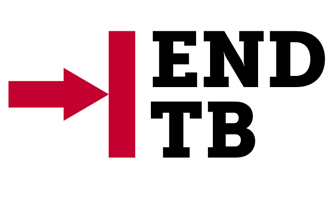An ongoing dialogue on HIV/AIDS, infectious diseases,
March 18th, 2019
Just 1 Month of TB Preventive Therapy Works for People with HIV in TB-Endemic Regions — How About Other People in Other Places?
 There’s a look our patients frequently give us when we tell them that preventive therapy for tuberculosis involves 9 months of treatment. If I were to put that look into words, they would be:
There’s a look our patients frequently give us when we tell them that preventive therapy for tuberculosis involves 9 months of treatment. If I were to put that look into words, they would be:
Yikes, Doc, 9 months is waaay too long — you must be out of your mind.
It’s the “9 months?!?!” face. We’ve all seen it.
Even the recent shift to using the 4-month rifampin strategy has been met with only partial relief, though I acknowledge it’s better. And the weekly isoniazid/rifapentine for 12 weeks approach hasn’t gained much traction in our clinic, possibly because some still believe that it must involve directly observed therapy.
This is why the clinical trial of TB prevention just published in the New England Journal of Medicine is so important. Tuberculosis remains the leading infectious cause of death in the world. Easier preventive strategies are urgently needed.
Nicknamed BRIEF-TB, the study compared a 1-month — you read that right, just 1 month — regimen of daily isoniazid (INH) and rifapentine to the standard-of-care, 9-months of INH. The primary endpoint was active TB or death. Eligible participants had HIV and were living in high TB prevalence areas, or had latent TB diagnosed through either a positive tuberculin skin test (TST) or a reactive interferon gamma release assay (IGRA). Roughly 3000 people entered the study.
After a median of over 3 years of follow-up, the 1-month strategy was noninferior to 9 months, with the incidence of active TB or death comparably low in both arms. Not surprisingly, the 1-month group completed therapy significantly more often than the 9-month group; toxicity was also less frequent, though this difference did not reach statistical significance.
Big news — this strategy could really change clinical practice, at least for people with HIV and especially in high prevalence regions.
But how do these data apply to those of us in areas of low TB prevalence, or to people without HIV, or both? Those are key questions.
On the one hand, if it works in regions with high TB incidence and in people with HIV, it should work in people here — where TB is much less common, and where we frequently prescribe preventive therapy even for people with normal immune status.
However, here are a couple of reasons to be cautious before making this extrapolation.
Essentially all the people we treat here for latent TB have positive TSTs or IGRAs. In the BRIEF-TB study, those with positive tests for latent TB comprised only 23% of the study entrants; in the remainder it was either not done or negative. While it’s true that these tests are notoriously insensitive in HIV, if a substantial proportion of the remaining 77% didn’t have latent TB at all, this could skew the results to showing no difference between arms.
Plus, most of the study participants received antiretroviral therapy. HIV therapy on its own reduces TB incidence even without preventive therapy. For people without HIV, sometimes we’re motivated to give preventive therapy for the very opposite reason — they are on, or about to start immunosuppressive treatment.
So for now, consider this an open question, an unknown that is unlikely to be answered in a comparable clinical trial done in people without HIV — at least if my clinicaltrials.gov search and consultation with TB experts is correct.
But take the poll anyway.


At least in table 2, people with positive TST or IGRA have comparable incidence for primary outcome, n=1100 in each group. Might not be powerful enough but sounds kinda reassuring.
Yes, this is somewhat reassuring, small numbers notwithstanding!
Paul
Not sure it matters what we think as insurance companies will likely not approve this regimen. Who has the time to fight with them?
So in Pepfarlandia we are struggling with this exact issue. Can we really give people with a new dx a month of pills and expect them to be fully adherent? Do we need to do a modified dot w a 3 mo regimen (dot not popular). Thoughts?
Given the fact that even the 9 month course doesn’t “work” all the time anyway, I say we make the switch for all.
My main concern is that when we aren’t sure that all of these truly had latent TB and the follow-up is only 3 years, it makes me unclear about what I can tell patients regarding how worried they (and any doctors seeing them in the future for pneumonia) should be about needing to rule out TB. Treating patients with therapy that may only be partly efficacious is risky as it could give a false sense of security, particularly in those going on biologic agents for other illnesses. So until more data is out I will stick with the 3 month and 4 month courses available.